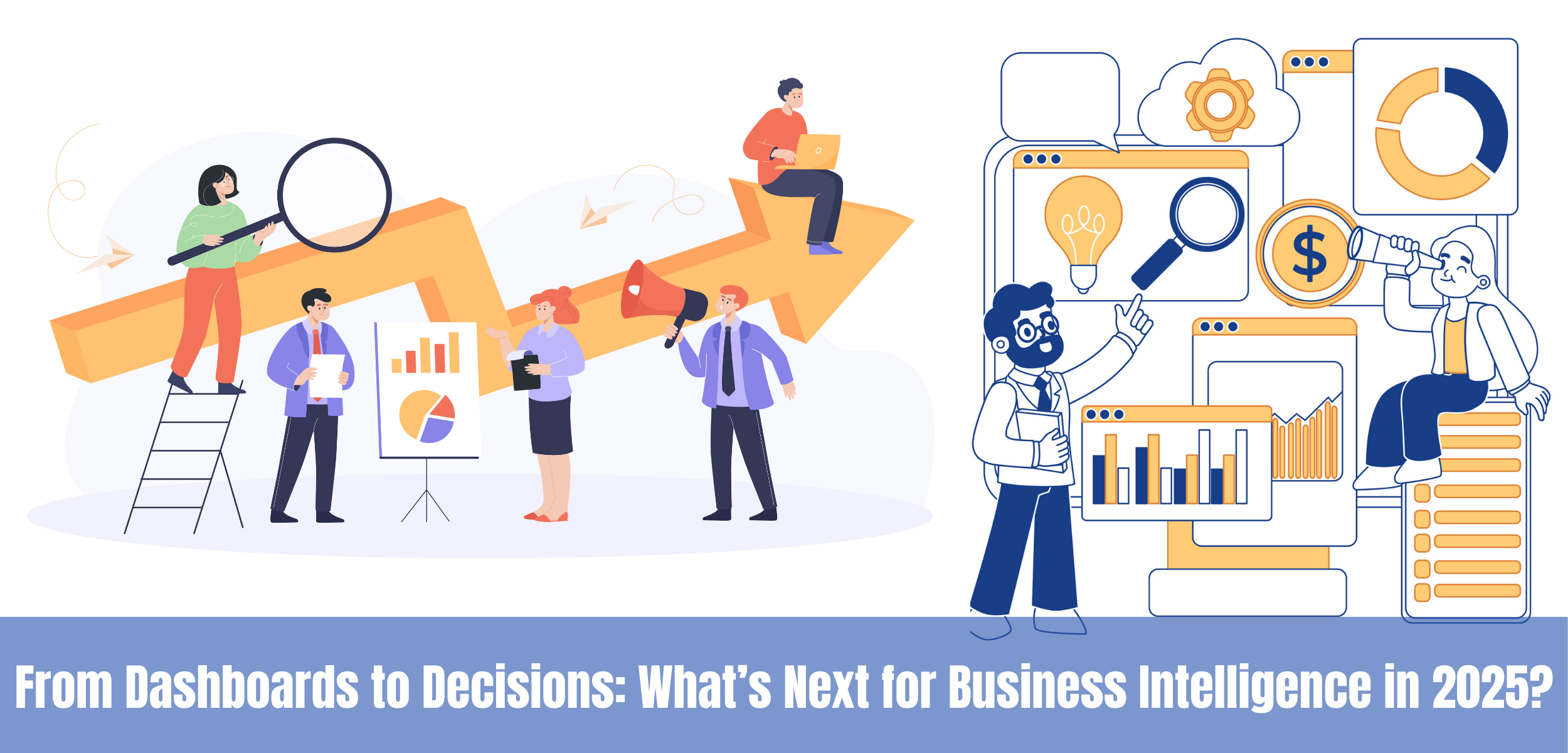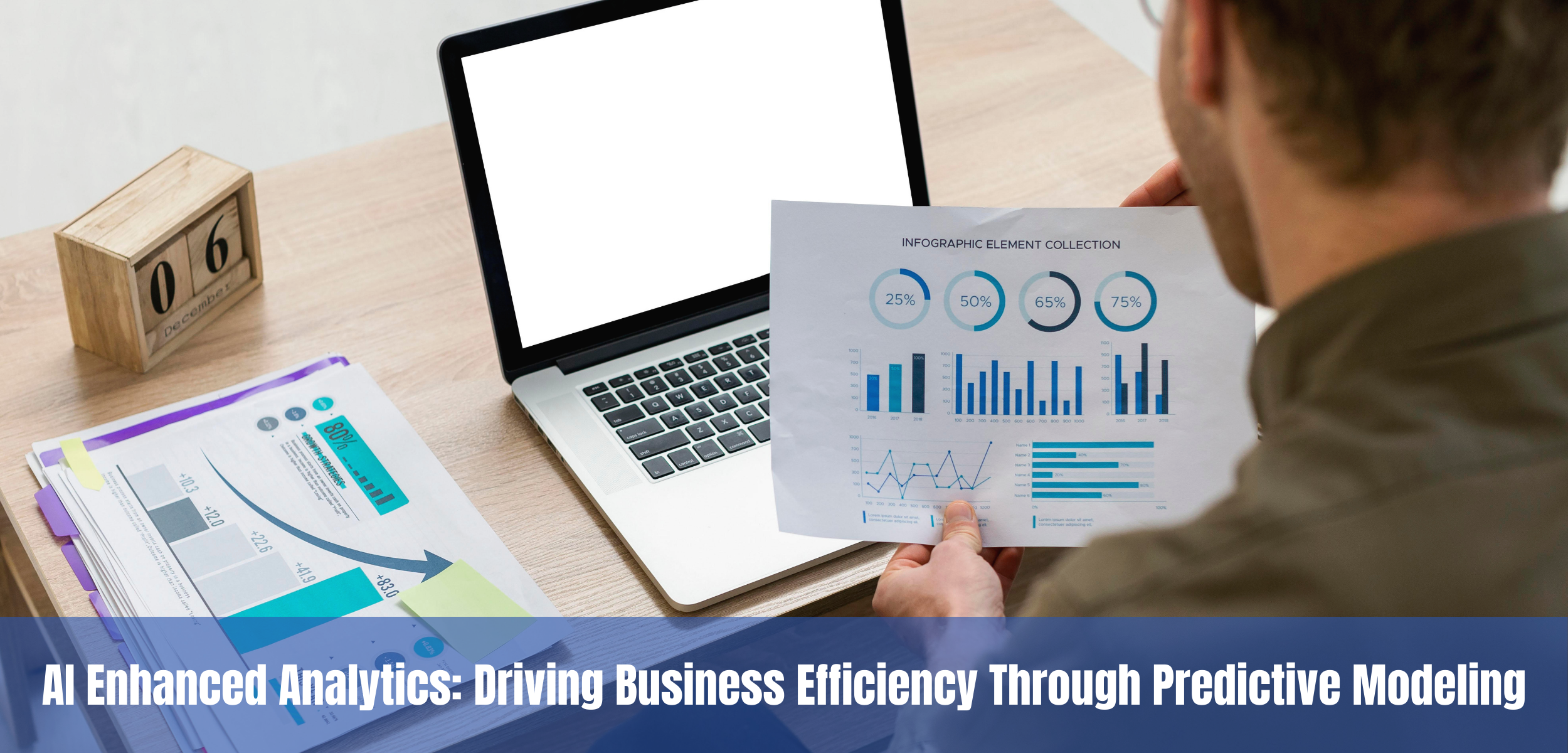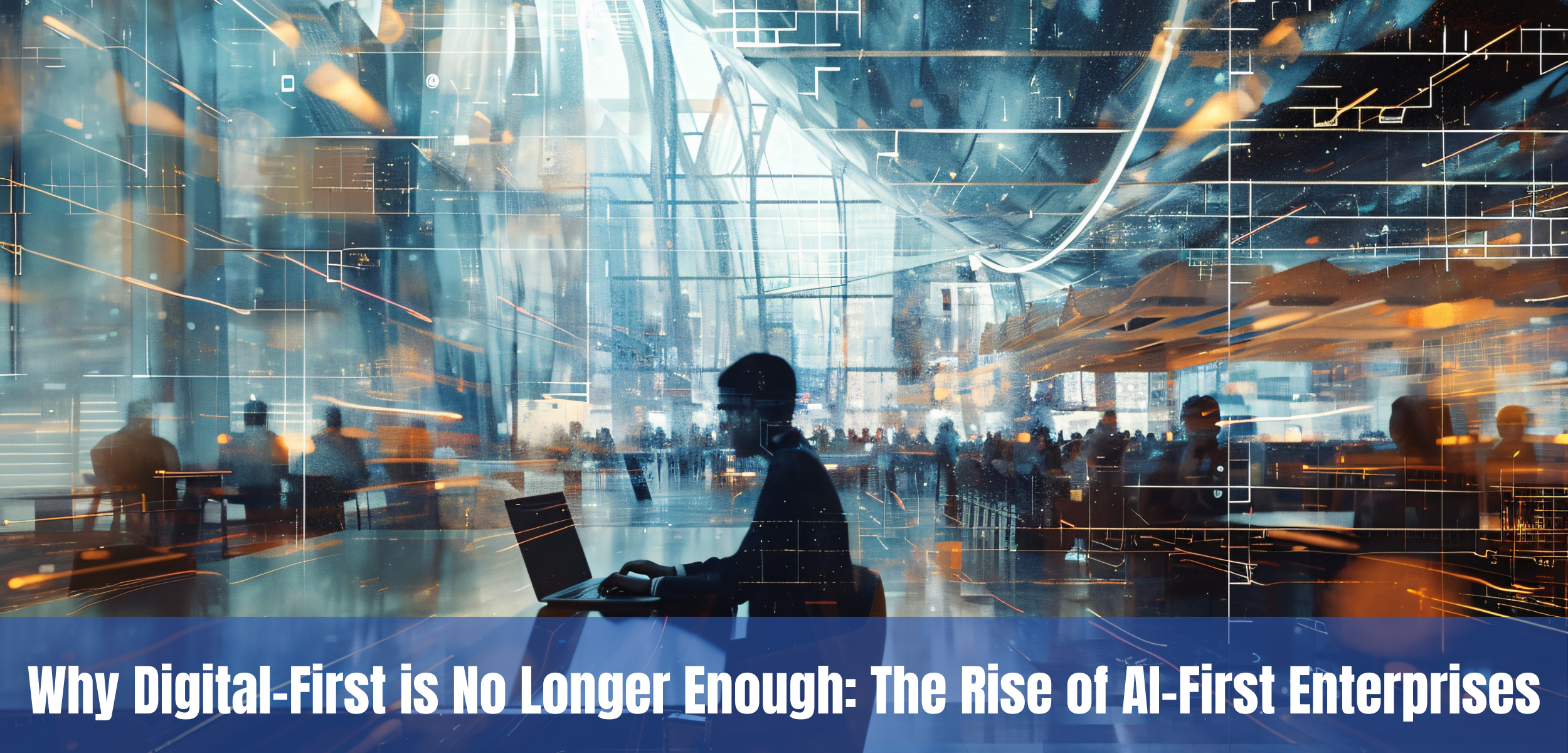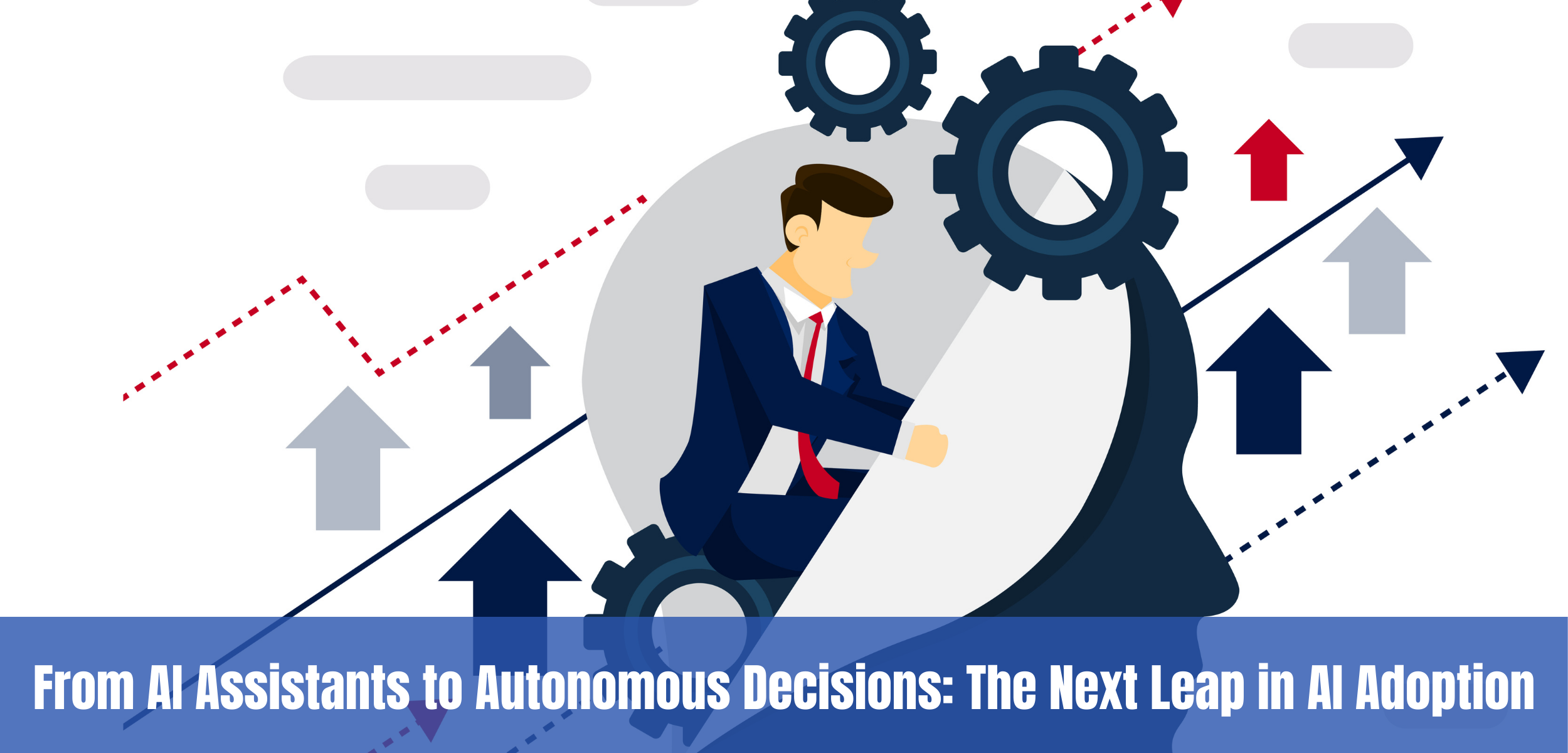Business Intelligence (BI) is at an inflection point. Traditional dashboards and static reports no longer meet the speed, complexity, and personalization modern decision-making demands. In 2025, BI is transforming from a passive reporting layer into a dynamic decision-making engine driven by real-time data, AI, and automation.
This blog explores what’s next for BI—from the limitations of legacy dashboards to AI-driven decision intelligence platforms—along with case studies, technology roadmaps, and a call to action for enterprises aiming to lead.
Why Dashboards Alone No Longer Work

Dashboards were once groundbreaking tools for data visualization, but today, they often lead to more confusion than clarity. Many users struggle to extract actionable insights from the data presented. The reasons for this include:
- Data latency: Dashboards provide historical data, not real-time context.
- Information overload: Dozens of dashboards, yet none used consistently.
- Lack of decision pathways: Dashboards answer "what," but not "what next."
Dashboards are static, often siloed, and not designed for contextual decision-making. In today’s fast-paced environment, businesses need tools that can think, learn, and act—not just report.
From Dashboards to Decision Intelligence: A BI Evolution
Business Intelligence is progressing beyond visualizations into automated, contextual, and decision-driven systems. Here's a simplified evolution roadmap:
|
Stage |
Intelligence Type |
Key Question |
Tools Involved |
|
1 |
Descriptive |
What happened? |
Dashboards, Reports |
|
2 |
Diagnostic |
Why did it happen? |
OLAP, Drill-downs |
|
3 |
Predictive |
What might happen? |
ML Models, Forecasting Tools |
|
4 |
Prescriptive |
What should we do? |
Decision Models, Simulations |
|
5 |
Autonomous |
Can it act for us? |
AI Agents, RPA, Decision Platforms |
By 2025, high-performing enterprises will operate in stages 4 and 5.
This shift is not just about technology, but about mindset—moving from hindsight to foresight, and from insight to action.
Key Trends Driving BI Transformation
1. AI-Augmented Analytics
AI is no longer optional in analytics. It reduces time to insight, improves accuracy, and minimizes human bias.According to McKinsey, companies leveraging AI for analytics see 5–6% higher productivity and 20–30% improved decision outcomes. (Source: McKinsey)
These tools do more than crunch data:
- Detect anomalies in real-time
- Generate natural language summaries
- Suggest optimal next actions
2. Natural Language Interfaces
- NLQ enables more people in an organization to interact with data without needing technical skills.
- Users can ask questions in plain English and receive immediate, contextual insights. This democratizes data usage across departments and roles.
3. Embedded and Contextual BI
- Insights are being delivered directly inside the tools employees already use.
- This shift reduces friction and increases the chance that analytics will be acted upon in real time. Contextual BI brings decision power to the point of work.
4. Decision Intelligence Platforms
- These systems combine AI, business rules, and scenario simulation to aid in high-stakes decisions.
- They’re increasingly used in finance, operations, and supply chain management to model complex variables and generate optimal strategies.
5. Data Mesh and Real-Time Fabric
- Data architecture is evolving to support decentralization without losing control.
- A data mesh allows domain-specific ownership while a data fabric ensures interoperability and governance. Together, they enable scalable, real-time decision-making.
Real-World Applications Across Industries
These applications showcase how BI is evolving from a reporting tool into a strategic engine for decision-making. Below are industry-specific use cases, each reflecting common operational scenarios where next-gen BI is making a real difference.
Retail
Dynamic pricing and promotions during flash sales. Retailers are using real-time customer behavior data and AI models to adjust pricing strategies instantly. This helps optimize inventory movement and improve margins based on demand fluctuations and competitor pricing.
Healthcare
Predictive triage in emergency rooms. BI tools integrated with patient intake systems help prioritize critical cases based on real-time vitals and historical data. Hospitals can better allocate staff and resources, improving patient outcomes and reducing wait times.
Manufacturing
Predictive maintenance on production lines. Sensors embedded in machines generate data on wear and performance. BI systems analyze this to predict failures before they happen, reducing costly downtime and enabling just-in-time servicing.
Logistics
Real-time rerouting of shipments based on weather and congestion. Logistics firms are leveraging BI dashboards connected to GPS and weather data to make split-second routing decisions, ensuring on-time delivery while optimizing fuel usage and vehicle health.
Banking & Finance
Real-time fraud detection and credit scoring. Financial institutions deploy decision intelligence tools to monitor transactions as they occur, flagging anomalies instantly and adjusting risk scores dynamically based on new behavioral patterns.
Education
Adaptive learning platforms that personalize student content. Schools and edtech platforms use BI to track student engagement and progress in real-time. The insights help teachers and platforms customize lesson plans and interventions, enhancing learning outcomes.
A Decision-Making Framework for BI
Frameworks provide a structured approach to guide organizations from data collection to automated action.
-png.png?width=896&height=672&name=Red%20And%20White%20Simple%20SWOT%20Analysis%20Graph%20(1)-png.png)
The OODA loop—Observe, Orient, Decide, Act—is widely applicable across industries, especially in dynamic or fast-changing contexts.
- Observe – Collect real-time signals and data
- Orient – Contextualize through models and trends
- Decide – Generate prescriptive actions
- Act – Trigger human or automated decisions
This keeps BI aligned with operational goals and user behavior.
Metrics That Matter in Modern BI
Shifting focus to decision impact metrics helps organizations truly measure BI’s value.
These KPIs allow teams to gauge whether insights are being used, trusted, and resulting in positive business outcomes:
- Time to Insight: How long from question to action?
- Decision Adoption Rate: Are people acting on insights?
- ROI on BI Investments: What business value is being generated?
- Decision Accuracy: How often is the AI right?
- Data Trust Index: Are users confident in data quality?
Roadmap to Decision-Centric BI
A phased roadmap helps avoid overwhelm while delivering incremental value.
Organizations should assess where they are today and follow a structured path toward decision intelligence:-png.png?width=810&height=1013&name=Green%20Minimalist%204%20Skills%20for%20Success%20Instagram%20Post%20(2)-png.png)
Risks and Considerations
Adopting new BI tools without caution can backfire. It’s important to balance innovation with oversight.
Governance, transparency, and ethics should be embedded in every BI initiative to ensure long-term sustainability.
- Overreliance on AI: Blind faith in machine-generated insights can mislead.
- Data Bias: Models reflect biased training data if not corrected.
- Security & Compliance: Decision automation must meet regulatory standards.
Proactive governance and human-in-the-loop oversight are essential.
Final Thoughts
Dashboards served their time. But 2025 demands faster, smarter, and more contextual decision-making. BI is evolving into a critical enabler of real-time decisions, and enterprises that embrace this shift will operate with speed, accuracy, and competitive foresight.
Evermethod Inc: Empowering Smarter Business Intelligence
Evermethod Inc is a Microsoft Solution Partner and an AI Solution Partner. We help modernize your BI infrastructure and empower your organization to make data-driven decisions faster and more effectively.
Reach out to Evermethod Inc today to schedule a BI health audit or consultation, and take the next step toward a smarter, future-ready business intelligence strategy.
Get the latest!
Get actionable strategies to empower your business and market domination
.png?width=882&height=158&name=882x158%20(1).png)

.png/preview.png?t=1721195409615)

%2013.png)


